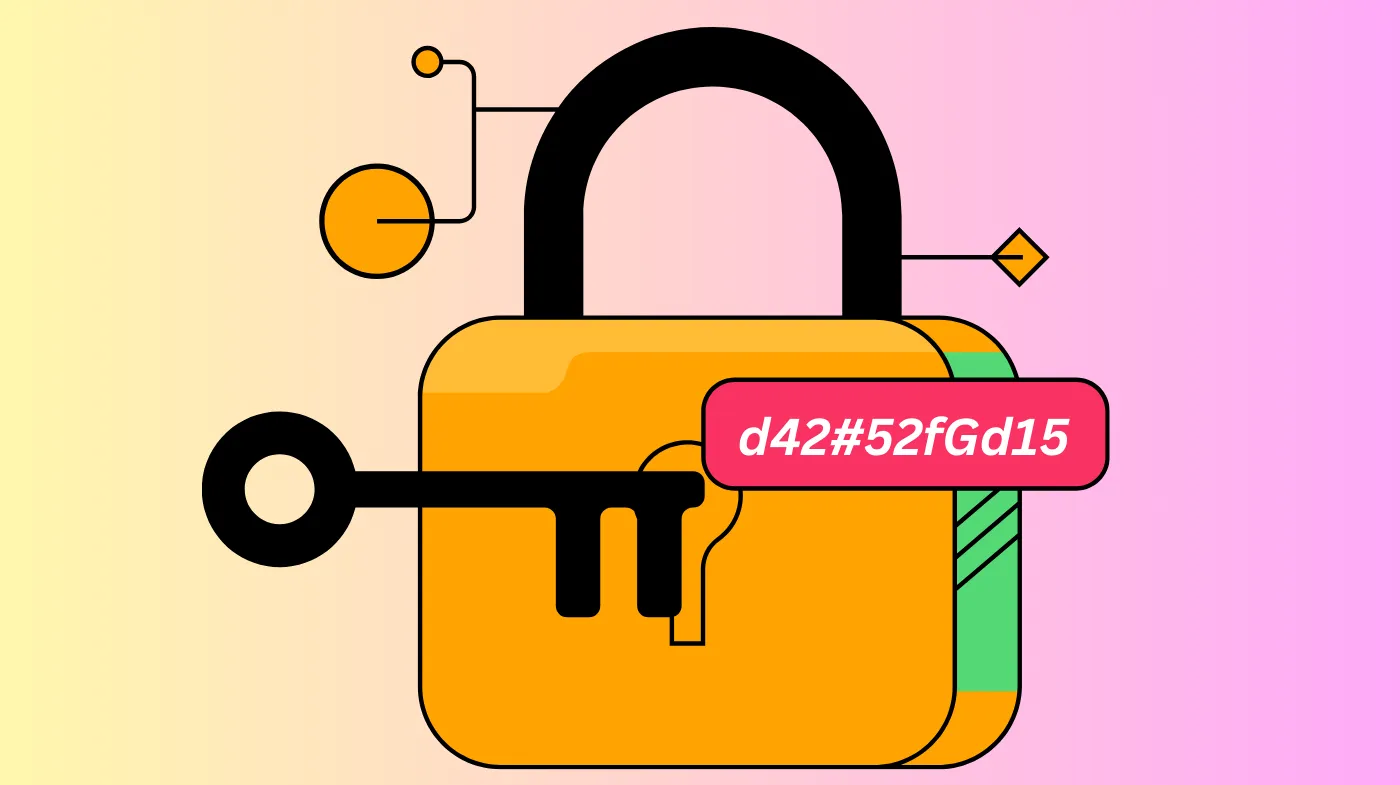
Your password might be one character away from being hacked. While most people focus on letters and numbers, they’re missing the game-changing power of special characters.
These tiny symbols transform weak passwords into digital fortresses that can resist even the most sophisticated cyber attacks. Hidden vulnerabilities exist in passwords that seem strong but lack a proper special character strategy.
This guide reveals three critical mistakes that compromise 87% of passwords and shows you exactly how to avoid them. You’ll discover the secret placement techniques security experts use, learn which symbols provide maximum protection, and master the art of creating memorable yet unbreakable passwords.
Understanding Special Characters in Password Security
What makes a character “special” in the context of password security? Special characters are non-alphanumeric symbols that add complexity and unpredictability to your passwords. Unlike regular letters (A-Z, a-z) and numbers (0-9), these characters include symbols like @, #, \, %, and many others.
Common Types of Special Characters
The most widely accepted special characters include punctuation marks, mathematical symbols, and keyboard-accessible special symbols. Standard special characters typically encompass symbols like:
-
Exclamation points (!),
-
At signs (@),
-
Hash symbols (#),
-
Dollar signs ($),
-
Percent signs (%),
-
Carets (^),
-
Ampersands (&),
-
Asterisks (*),
-
Parentheses (),
-
Hyphens (-),
-
Underscores (_),
-
Plus signs (+),
-
Equal signs (=),
-
Square brackets [],
-
Curly braces ,
-
Pipe symbols (|),
-
Backslashes (\,
-
Colons (:),
-
Semicolons (;),
-
Quotation marks (” ’),
-
Less than (<),
-
Greater than (>),
-
Question marks (?), and
-
Forward slashes (/).
Platform-specific variations exist across different systems and applications. While some platforms accept extended ASCII characters or Unicode symbols, others maintain strict limitations to ensure compatibility and security.
ASCII vs Unicode Special Characters
ASCII special characters represent the traditional set of symbols available on standard keyboards and are universally supported across platforms. These 128-character encoding systems include all basic punctuation and mathematical symbols that form the foundation of password complexity requirements.
Unicode special characters extend far beyond ASCII limitations, encompassing thousands of symbols from various languages and symbol sets. However, many systems restrict password fields to ASCII-only characters to prevent encoding issues and ensure consistent security processing.
Platform-Specific Limitations
Operating system restrictions vary significantly between Windows, macOS, and Linux systems. While most modern systems support comprehensive special character sets, legacy applications might impose unexpected limitations on certain symbols.
Web application constraints often implement their own special character policies. Some platforms prohibit specific symbols due to SQL injection concerns or scripting vulnerabilities, while others embrace broader character acceptance for enhanced security.
Security Benefits of Special Characters
Password complexity exponentially increases when special characters join the mix. A password containing only lowercase letters offers 26 possible characters per position, while adding special characters can expand this to over 90 possibilities, making brute-force attacks significantly more challenging.
Increased Entropy and Randomness
Entropy measures password unpredictability, and special characters dramatically boost this crucial security metric. Each additional character type increases the mathematical complexity that attackers must overcome, extending the time required for successful password cracking from hours to potentially decades.
Randomness enhancement occurs when special characters interrupt predictable patterns that humans naturally create. Instead of simple substitutions like replacing “a” with ”@,” truly random special character placement creates passwords that resist pattern-recognition attacks.
Protection Against Dictionary Attacks
Dictionary attacks rely on common words and predictable substitution patterns. Special characters, when used creatively, break these predictable patterns and force attackers to resort to more time-intensive brute-force methods.
Pattern disruption becomes particularly effective when special characters appear in unexpected positions rather than following common substitution rules that hackers anticipate.
Brute Force Attack Resistance
Computational requirements multiply exponentially as character set diversity increases. A password with letters, numbers, and special characters requires significantly more processing power and time to crack through brute-force methods.
Time complexity calculations demonstrate that adding special characters can extend crack times from minutes to centuries, depending on password length and complexity.
Best Practices for Using Special Characters

Strategic placement matters more than quantity when incorporating special characters into passwords. Rather than clustering symbols together, distribute them throughout your password to maximize security benefits while maintaining memorability.
Optimal Character Distribution
Balanced distribution involves spreading special characters throughout your password rather than concentrating them at the beginning or end. This approach prevents predictable patterns while ensuring maximum entropy across all character positions.
Positional strategy suggests placing special characters between words or number sequences to create natural breaks that enhance both security and memorability.
Avoiding Common Patterns
Predictable substitutions like replacing “a” with ”@” or “o” with “0” are well-known to hackers and provide minimal security benefits. Instead, use special characters in unexpected ways that don’t follow obvious linguistic patterns.
Sequential arrangements such as “123!” or “abc#” should be avoided as they create predictable patterns that automated tools can easily identify and exploit.
Memorization Techniques
Mnemonic devices can incorporate special characters naturally by using punctuation that reflects the meaning of your password phrase. For example, turning “I love pizza in 2024!” into a secure password maintains logical flow while adding complexity.
Visual association methods help remember special character placement by creating mental images that connect symbols with their positions in your password structure.
Length vs Complexity Balance
Password length often trumps complexity, but special characters provide crucial security benefits without requiring excessive length. A 12-character password with mixed character types typically offers better security than a 16-character password using only letters.
Practical considerations suggest aiming for passwords that balance special character inclusion with reasonable length requirements that users can manage effectively.
Common Mistakes and How to Avoid Them
Overcomplicating passwords with excessive special characters can backfire by creating passwords that are difficult to type correctly and remember accurately. Focus on strategic placement rather than maximum symbol density.
Overuse of Special Characters
Symbol overload can create passwords that are so complex they become impractical for regular use. Users often compensate by writing down overly complex passwords, which defeats the security purpose entirely.
Typing difficulties increase when passwords contain too many special characters, leading to frequent login failures and potential account lockouts.
Predictable Placement Patterns
End-loading special characters represents a common mistake where users simply add symbols to password endings. This predictable pattern provides minimal security enhancement compared to distributed placement.
Beginning clustering similarly fails to maximize security benefits because attackers expect special characters in initial positions where users commonly place them.
Platform Compatibility Issues
Cross-platform problems arise when passwords contain special characters that some systems don’t accept. Research platform-specific requirements before creating passwords that might cause access issues.
Mobile device challenges can occur with certain special characters that are difficult to access on smartphone keyboards, potentially preventing account access when needed.
Password Recovery Complications
Forgotten symbol positions create recovery challenges when users can’t precisely remember where special characters appear in their passwords. Consider using an online password generator that creates memorable yet secure combinations.
Support system limitations sometimes struggle with special character verification during account recovery processes, potentially complicating legitimate access attempts.
Frequently Asked Questions
How many special characters should I include in my password?
Two to four special characters typically provide optimal security benefits without creating excessive complexity. The key is strategic placement rather than maximum quantity.
Distribute special characters throughout your password rather than clustering them together, and ensure they don’t follow predictable patterns that hackers commonly expect.
Are certain special characters more secure than others?
All standard special characters provide similar security benefits when used properly. The security advantage comes from unpredictability rather than specific symbol choice.
However, some symbols like spaces or quotes might cause compatibility issues on certain platforms, so stick to widely accepted characters like @, #, \, %, ^, \, *, and punctuation marks for maximum compatibility.
Can special characters cause problems with password recovery?
Special characters rarely cause direct recovery problems when systems are properly designed. However, users sometimes forget exact symbol placement or confuse similar-looking characters during recovery attempts. Using robust password-checking tools during password creation helps ensure accuracy and reduces recovery complications.
Securing Your Digital Future with Special Characters
Special characters are the backbone of modern password security. They transform weak text into powerful digital shields that protect your identity. This guide showed you how these symbols create exponential complexity. They resist attacks and stop cyber threats cold.
The proof is undeniable. Strategic special character use builds passwords that crush brute-force attacks. They defeat dictionary exploits. They outsmart pattern-recognition tools. Smart distribution creates unbreakable yet manageable digital keys.
These tiny symbols pack enormous power. They stand guard against hackers targeting your accounts. Your digital security depends on mastering these small but mighty defenders. Don’t let weak passwords expose your digital life.
